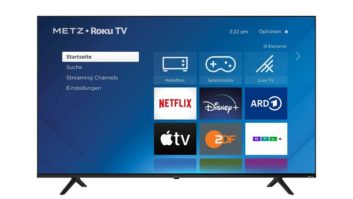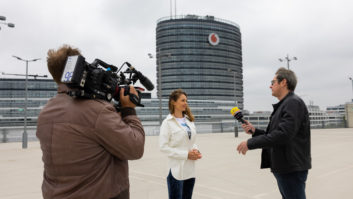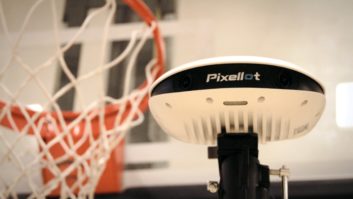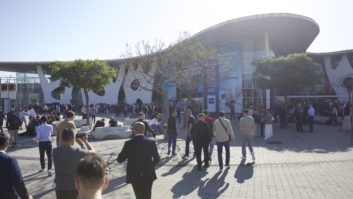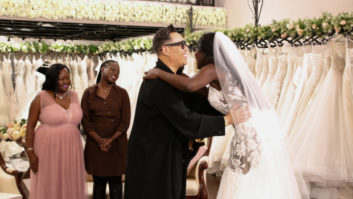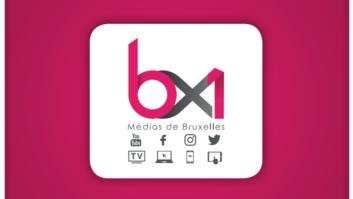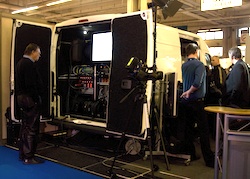
TV station TV Rennes 35, local TV station TyTélé and systems integrator PAD are at the forefront of a technological revolution. Starting with a creative concept, they have developed a fully mobile TV station in the form of an OB van using professional, yet affordable and simple to use equipment.
“This is a new concept,” says Jean-Luc Nelle, general manager of TV Rennes 35. “The entire TV station is run from within the van.”
Born in March 1987, TV Rennes was the first local TV station created in France. Inaugurated by the President of the Republique, it was originally broadcast around the city of Rennes. Early in 2007, the TV station was renamed TV Rennes 35 and now broadcasts to around 1.2 million viewers offering 15 hours per week of viewing in full HD.
Nelle’s vision was for a fully local, fully mobile TV station. “I originally had the idea for the mobile TV station in 1984,” explains Nelle, “but at the time people did not believe that this was possible. Because of the products that are now available, it was not difficult to make this idea a reality.”
System integrator PAD was approached in 2007 by TV Rennes 35 to design the technical setup for TyTélé. Phillipe Baudet of PAD and Nelle shared the same philosophy of finding creative means to develop technical solutions. Nelle believes, “When you can be creative, you can create your own freedom to achieve what you have imagined.”
In order to create the mobile television station, PAD chose products from Blackmagic Design as the basis for the workflow. This includes Studio Videohub for routing, DeckLink HD Extreme cards for capture and playback, Mini converters, OpenGear converters, and the new Blackmagic UltraScope for test equipment.
The station currently has around 300,000 potential viewers across France and is run by a team of 12 people, including nine in production. TyTélé is an entirely ‘local’ station made possible by the mobile TV station. The van is used outside at different locations in different conditions every day to broadcast a variety of events including musical events, sports events and local news.
Baudet’s prerogative was for the van to be as flexible and as simple to use as possible. “The van required products that would be easy to integrate with equipment from other companies, such as video rental companies, and sound and lighting equipment.” He finds Blackmagic Design’s Mini converters particularly useful for this in terms of flexibility and compatibility. “I consider them to be a ‘must have’ for any OB van,” he says. TyTélé’s van is equipped with three SDI to analogue, two analogue to SDI, three SDI to HDMI and three HDMI to SD.
The set up of the van is fully HD and comprises of Apple Mac Pros using Blackmagic Design DeckLink cards to ingest and playout content using Softron software. It also uses OpenGear optical fibre converters in combination with a single high-grade fibre optic cable to connect to the stage or shooting area to carry all HD video signal and data and 48 channels of audio.
Blackmagic Design’s Studio Videohub is used to route all equipment in the van and is integral to the station’s workflow. “Routing all equipment through the Studio Videohub makes everything a lot more simple as this completely eliminates manual patching,” explains Baudet.
The mixer used in the van is a Panasonic AV HS400A and, as with all other equipment in the van, has been chosen for simplicity of use. The studio uses a Blackmagic UltraScope for waveform monitoring, which runs on a Mac Pro using Windows XP and is connected to a Roland M-400 Soundesk and to the mixer to control all manual shading. The van is equipped with Telemetrics robotic camera system and four Sony EX full HD cameras.
Using this simple set up, TyTélé is able to do all programming within the van, so it is a completely self-sufficient TV station that can be manned by two people, or one person if necessary. Nelle likens this to a DJ running a radio station.
Thanks to the technical set up in the van that they supplied, PAD were asked to work on a regional broadcasting and archiving project located at TV Rennes 35. The station was established 22 years ago in the town of Rennes in the North West of France. At the time its viewers amounted to 150,000. Since then this figure has increased to around 1.3 million potential viewers.
For this project, PAD installed an SAN, coupled with a backup and archive capacity, with a simple to use final control room based on pro-video equipment rather than traditional equipment that can often be expensive and complicated to install, maintain and operate. Everything is distributed on an HD/SD-SDI signal with embedded audio. For this, two Studio Videohubs are used with a number of SDI to analogue and analogue to SDI Mini converters to convert analogue VTRs and SDI to HDMI Mini converters for big screen monitoring. PAD also used many SDI to audio and audio to SDI converters to build a self-developed final switcher, adding audio follow functionality to the Panasonic AV-HS400 Videomixer.
Nelle ascertains that these types of projects have recently become easier to set up and develop. “The price of these products a few years ago meant that only an expert or large, well established companies were able to use the equipment that was available at the time. Now, more people are able to use this equipment as it is more affordable, which marks a turning point in the technological revolution for the broadcast industry.”
Many industry professionals have traditionally opted to buy more expensive equipment as they see a certain security in this. Nelle maintains that it is important to break away from this idea. “The technology is not late, but rather it has taken time for people to evolve and change their frame of mind. These are the people who are a part of the technological revolution. We have chosen to use products from Blackmagic Design as they enable us to achieve the highest quality results at a very affordable price. This is a significant factor helping us to progress in this technological revolution.”


